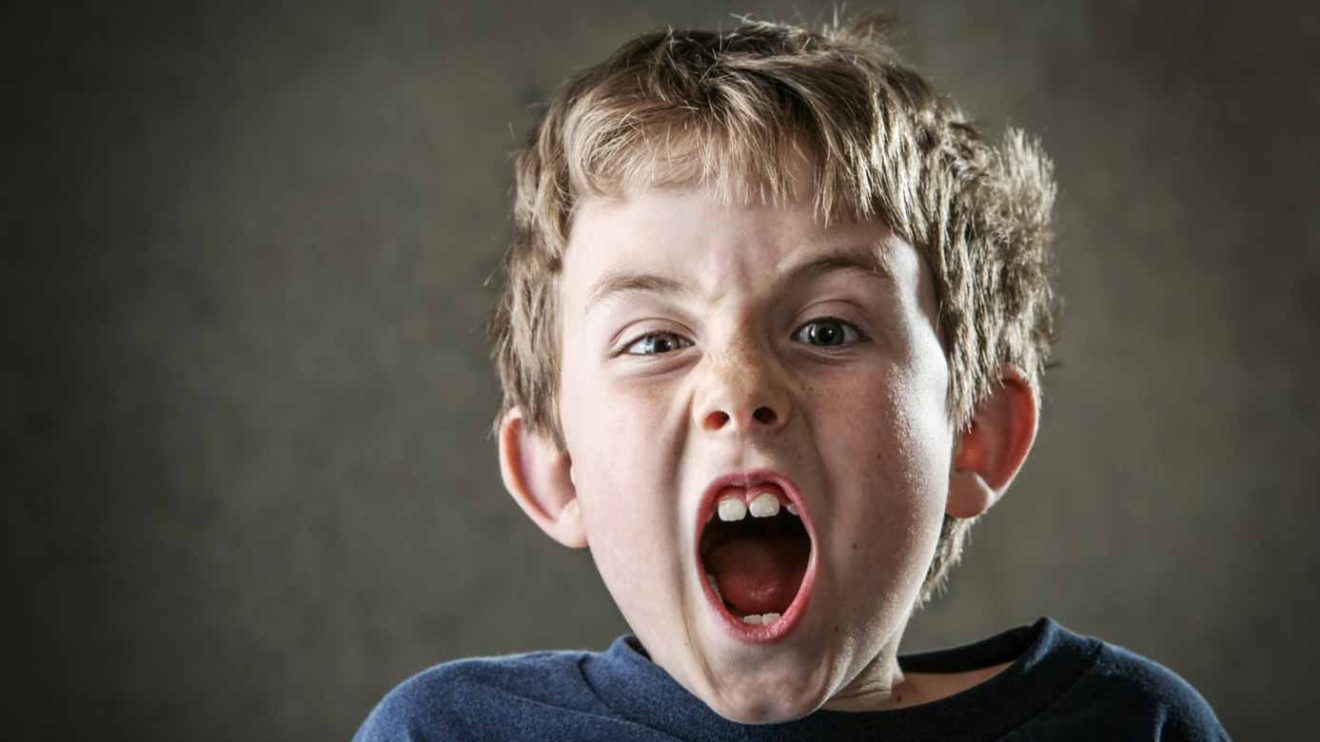ADHD in children: 7% to 10% of children and teenagers suffer from Attention Deficit Hyperactivity Disorder (ADHD). Many of them are not diagnosed, and if they are not treated – they will suffer all their lives. is not that a loss? What are the symptoms of ADHD? Who should contact for a diagnosis? How do you diagnose? How are you treated? The complete guide.
Attention deficit disorder (ADHD) is a recognized and common worldwide phenomenon: according to estimates by professionals, 7% to 10% of children and youth up to the age of 18 suffer from it.
In the past, attention deficit disorder was treated as a disorder that is limited to childhood and passes until puberty. Today, it is estimated that about 70% of children with attention deficit disorder continue to suffer from it even later in life. According to estimates, 4% to 7% of adults have attention deficit disorder.
Why is it important to treat ADHD in children?
ADHD in children causes significant difficulties in activities such as learning, listening, etc., in social functioning and emotional and behavioral regulation.
Avoiding treatment for ADHD in children may cause significant difficulties in functioning – which may lead to developmental and emotional disturbances and even the development of psychiatric disorders such as depression and medical disorders in adulthood.
On top of that, attention deficit disorder increases the risk of life-threatening situations such as various addictions and accidents of all kinds (including car accidents ).
How can I know if it is worth referring my child for diagnosis?
DSM is the diagnostic manual of the American Psychiatric Association, and it is also relied upon in Israel for the diagnosis of various disorders, including attention deficit disorder.
The guide defines two areas of attention disorder:
- Lack of attention.
- Hyperactive-impulsive behavior.
The criteria for diagnosis are defined in the guide. If your child meets the criteria listed here, it is recommended to get diagnosed with ADHD in children.
lack of attention

The criteria: there are at least six symptoms of inattention in children up to the age of 16 and at least five symptoms in children aged 17 and over. To be considered a criterion, each symptom must appear for at least 6 months in a way that interferes with functioning and does not correspond to the developmental stage.
The symptoms of inattention are:
- Often the boy or girl does not pay attention to details or makes silly mistakes (at school or in other activities).
- They often have difficulty sustaining attention for a long time.
- They often seem not to listen when spoken to directly.
- They often have difficulty following instructions and tend to “smear” assignments.
- They often have difficulty with order and organization.
- They often avoid, dislike, or refuse to do tasks that require continuous mental effort (eg homework).
- They often lose things that are necessary to perform tasks or activities (school supplies, books, wallets, cell phones, keys, glasses, etc.).
- They are often easily distracted.
- They are often prone to forgetfulness in daily activities.
Hyperactivity-impulsivity
The criteria: at least six symptoms of hyperactivity-impulsivity for children up to the age of 16 or at least five criteria for those aged 17 and over that have appeared for at least 6 months in a way that interferes with functioning and does not correspond to the developmental stage (it is worth noting that in most adults the hyperactive component tends to weaken, and for that reason, the disorder is less noticeable to the eye).
The symptoms of hyperactivity-impulsivity are :
- The boy or girl often sits restlessly and frequently moves his arms and legs.
- They often get up from their chair in class in situations where they are expected to remain seated.
- They often run or climb in inappropriate situations (in teenagers or adults this may only manifest as a feeling of restlessness).
- They are often unable to play or participate in activities quietly (they make a lot of noise in the environment).
- They often behave as if they are “driven by a motor”.
- They often talk non-stop.
- They often blurt out an answer before finishing the question.
- They often find it difficult to wait their turn.
- Often interrupts people or harasses them (eg, bursts into conversations or into games).
In addition, the following conditions must be met:
- Some of the symptoms of inattention or hyperactivity and impulsivity appeared before the age of 12 years.
- Some of the symptoms appear in at least two settings (such as home, school, while staying with friends or relatives).
- There is clear evidence that the symptoms interfere with or damage the quality of functioning in society and at school.
- The symptoms cannot be better explained by another mental disorder (such as mood disorder, anxiety disorder, or personality disorder ).
This is my boy stamp! What to do?
Contact the pediatrician, and he will refer you to the appropriate person for diagnosis: a pediatric neurologist, a child and adolescent psychiatrist, a pediatrician who has undergone special training in the field, or a family doctor who specializes in child development.
Attention deficit disorder is extremely annoying for the child and his family, and the sooner the diagnosis is made, the better. According to state health law, a child up to the age of 18 is entitled to a full diagnosis according to the criteria established by the Ministry of Health.
Is there an unequivocal test that can diagnose attention disorder?
No. Although a great deal of knowledge regarding the biological basis of this disorder is accumulating, so far there is no objective test, blood test, or brain imaging, capable of determining whether the child suffers from attention deficit disorder.
Just as the therapist learns about depression or anxiety through a report from the patient and those around him and not through a blood test or an MRI, so the diagnosis of attention disorder is based first and foremost on a report from the parents and the educational staff regarding the way the child behaves.
Diagnosis of attention and concentration in children
A complete diagnosis includes the following components:
- Developmental assessment.
- Clinical examination (interview with a doctor).
- Filling out questionnaires by parents and/or teachers.
- The diagnosing doctor will decide if a computerized test is also necessary.
- Summary and recommendations for treatment by a consultant physician.
What is the clinical examination?
This is actually a diagnosis made according to the symptoms seen in the subjects and according to their patterns of behavior and functioning in different situations. The clinician can use, among other things, an interview with the child and the parents, observations of the child and the parents, physical and neurological tests, and cognitive tests.
It is very important to differentiate the disorder from different medical conditions, in other words: there are diseases or medical conditions that share common symptoms with attention deficit disorder, so it is important to make sure that the patient does not suffer from them.
For example mental abnormality at both ends (giftedness on the one hand and a certain level of retardation on the other), epilepsy, sleep disorders, adjustment disorders, behavior disorders, depression, learning disabilities, an accompanying result of physical or mental trauma, various physical difficulties such as vision or hearing disorders. Tests such as vision and hearing can be effective in some cases. In some situations, it is useful to do a language and speech assessment.
Where are attention disorders diagnosed?
Children under the age of 6 years: the differential diagnosis of young children is complex, and drug treatment is not defined as the first line of treatment for ADHD in children. Therefore, children under the age of 6 are referred for diagnosis at child development institutes or early childhood mental health clinics.
Children 6 years old and older: the initial diagnosis is made in attention clinics scattered throughout the country by pediatricians and family doctors who have undergone special training for this.
Medically or mentally complex cases are referred to specialists in neurology or psychiatrists.
What questionnaires are given to parents and teachers?
Several validated questionnaires are accepted around the world. The most common are the Vanderbilt questionnaire, the long or short Connors questionnaire, the DSM questionnaire, and the CBCL questionnaire.
What is the computerized test for ADHD in children?
There are several types of tests defined as Continuous Performance Task tests (CPT for short). These tests directly test the child’s ability to deal with a monotonous and relatively boring task, over time.
A computerized test does not give an unequivocal answer as to whether or not there is an attention disorder, but it is an aid in the diagnosis process and sometimes also in adjusting the medication. It is the diagnosing professional who decides whether a computerized diagnosis is necessary.
The child watches a computer monitor for a fixed period and is supposed to respond to one stimulus and ignore another stimulus. The test measures the speed and accuracy of information processing by comparing the results to the norms that characterize the age of the subjects.
The common tests that are currently in use are the TOVA test (Test of Variables of Attention); and the MOXO test.
After all the tests, is there an effective treatment?
Hell yeah! In the past, it was common to assume that this is a disorder that causes a functional decline in adulthood, which ultimately leads to a lower position – academically, professionally, and also in the interpersonal field.
There are several ways to deal with ADHD in children and treat it successfully. Among them are effective drug therapy (which unfortunately has been associated with endless myths and misinformation), behavioral therapy, and emotional therapy designed to deal with the consequences of the attention disorder and especially with the lack of diagnosis throughout the childhood years.
Correct treatment prevents the aggravation of the deficiencies and enables much more normal functioning and realization of the personal potential of everyone.
So why not treat immediately instead of going through all this long diagnosis?
Because if the only problem (ADHD in children) that caused all the symptoms is poor vision or poor hearing, you don’t need attention disorder treatment – you need to treat the problem that exists, and since attention disorder is a multidimensional disorder, close to the norm and without a clear identifying characteristic – it is not always easy to diagnose.












Add Comment